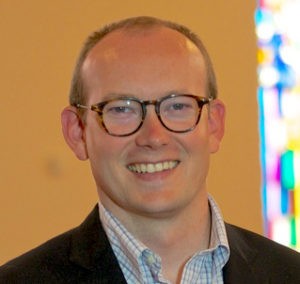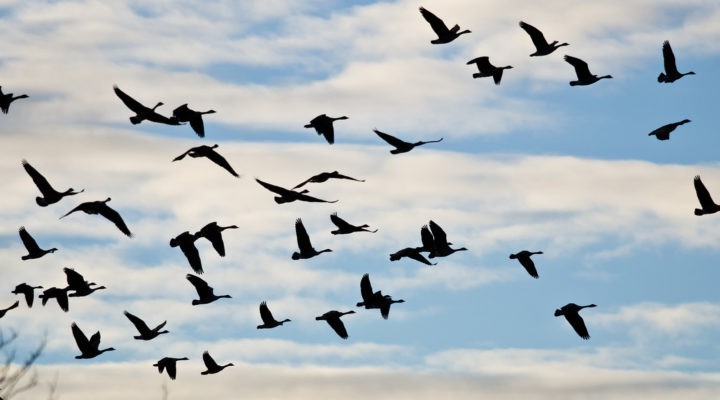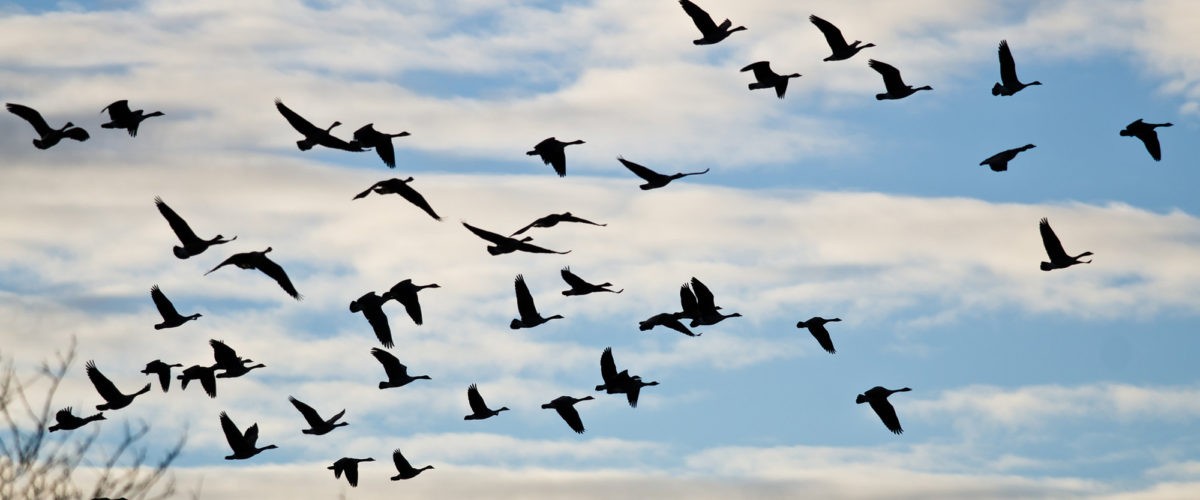In her recent poem, “A Wing and A Prayer,” Beth Ann Fennelly captures a familiar revelation from early on in the pandemic — how the birds outside our windows and in our backyards seemed so darn loud.
We thought the birds were singing louder. We were almost certain they were. We spoke of this, when we spoke, if we spoke, on our zoom screens or in the backyard with our podfolk. Dang, you hear those birds? Don’t they sound loud? We shouted to the neighbor, and from behind her mask she agreed. The birds are louder this spring.
 But as she notes later in the poem, now we know that, in fact, it was not the birds who were louder, but we who were quieter.
But as she notes later in the poem, now we know that, in fact, it was not the birds who were louder, but we who were quieter.
Ornithologists have recorded lowered decibel levels of bird song. In the absence of noise pollution — our planes overhead, our cars rushing past with their motors and horns, our bars leaking music onto the street corners — the birds don’t need to shout.
And so it was with so many elements of nature that seemed to be uncharacteristically present during our lockdown. The hummingbirds outside our windows were not busier; we were less so.
The flowers’ blooms were not fuller; our schedules were emptier.
It was not that the spring was uniquely beautiful, but that we were uniquely attuned to its beauty.
The earth, we’re reminded, remakes itself each year, with or without our attention. Of the birdsong, she says near the end of her poem, it wasn’t that it was louder, but that “we needed it more.”
“Poetry in the pandemic,” she writes, “birdsong that was there all along.”
“It was not that the spring was uniquely beautiful, but that we were uniquely attuned to its beauty.”
For our congregation, so much of this birdsong came in the form of elements of the story we claim to know well enough to live by but had neglected to notice through the years.
Most years, Christmas is defined by the comfort we find in the familiarity of it all. This past year, like that first Christmas, we were invited into a story we didn’t yet know by heart. A story that was new and unfolding before our eyes. In our own scrambling, we were reminded that the Christmas story itself is one of improvisation and imagination. Of second and third options. A story of people making do and God making a way.
Because of the threat of rain on Christmas Eve, we decided to go ahead and add elements from our traditional service to an improvised “Service of Lessons and Carols” (perhaps our most cherished Christmas tradition) to be held in our parking lot the night before on Dec. 23, including the classic candlelit singing of “Silent Night” to close. There was a light breeze on that clear, crisp night, and so in order to keep one’s candle lit it was necessary to cup it with your hands. To share it required a dance of sorts, where both parties would carefully, tenderly, bring their candle wicks together and gently, gently share this precious flame, celebrating together when the wick caught fire, handing it over and receiving it almost — can we say it? — as one would a baby.
It took a few extra verses, but I am here to tell you the light indeed shined in the darkness, and the darkness did not overcome it.
As the church year progressed, the birdsong kept getting louder.
Worshipping again in the parking lot for Palm Sunday allowed us to invite the children to use palm prawns as paintbrushes during worship, right there next to the makeshift altar, something that would have induced gasps in normal times but in this new world seemed to capture the exuberance and spontaneity of that makeshift celebration.
Maundy Thursday was observed in the park across the street, where we discovered that at dusk crape myrtles could be mistaken for olive trees, and so it was not as difficult to find ourselves there in Gethsemane with those sleepy disciples.
On Easter morning we gathered again in the parking lot, that blessed sanctuary of God’s creation, under skies so blue not a soul longed for the lofty rafters of our sanctuary. Birds flew overhead and a baby crawled from his mother’s lap to a blanket on the median grass. All things were made new. During the welcome I invited those gathered to remove their masks and look around to see who was gathered there with them. It must have been how Mary felt in John’s telling of the resurrection, when Jesus called her name, and she suddenly recognized his face.
Has it always been there, or was it just this year that Mary first sees the risen Christ through her tears?
“Now ‘Ordinary Time’ never has felt so misnamed.”
Has the risen Christ always had wounds, and it was just this year that we finally noticed them?
At Pentecost, now back in our sanctuary, we read those words from Acts of the disciples in Jerusalem waiting for the Spirit to come and how “they were all together in one place,” and we realized how much of a miracle that was.
Now “Ordinary Time” never has felt so misnamed. There is nothing ordinary about any time spent with others.
I wonder, now as I remember these moments, these holy, uninvited moments, was Scripture louder this past year, or was it just our world, our lives, that were quieter, so that we could hear it? Was it that Scripture didn’t need to shout?
“Attention is the beginning of devotion,” writes that great poet of the natural world, Mary Oliver.
“Where your treasure is, there your heart will be also,” said a greater poet, still.
Each of them echoing the birds who still fly overhead (those greatest poets of them all?) singing to us, faintly now, as we return to the world as we want it to be, “We’ll be here when you need us.”
Scott Dickison serves as senior pastor of First Baptist Church of Christ in Macon, Ga.
Related articles:
Second Easter during pandemic brings greater sense of hope nationwide
What I learned by listening to women pastors during the pandemic | Analysis by Susan Shaw
Church leaders, here’s your new vocabulary word for 2020: ‘Liminal’


